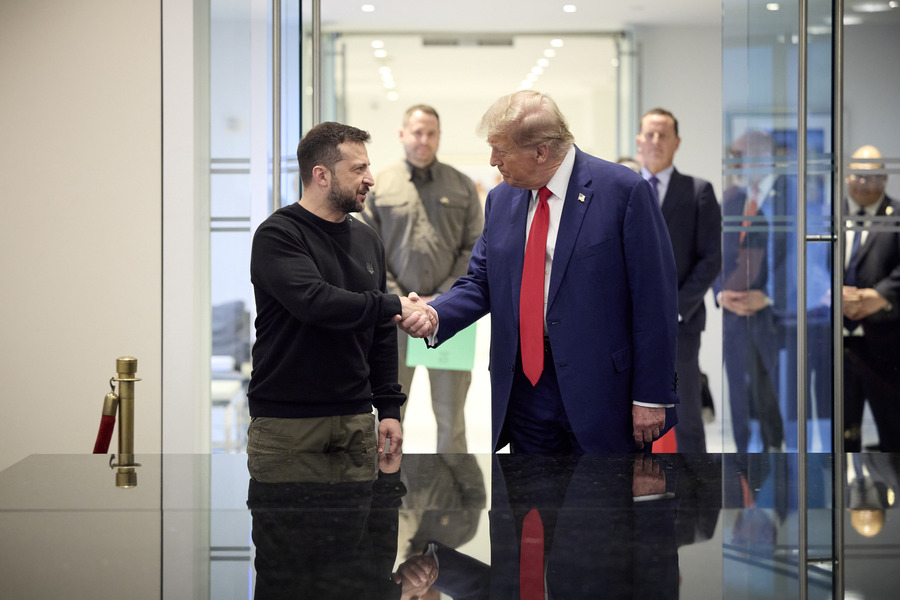On the Latest Draft of the Trump Administration Guantanamo Detention Executive Order
The indispensable Charlie Savage has just posted the latest iteration of the Trump Administration’s planned Executive Order on detention issues, along with an article placing that draft in context (including helpful insights from Jack Goldsmith and Ryan Goodman).
Published by The Lawfare Institute
in Cooperation With

The indispensable Charlie Savage has just posted the latest iteration of the Trump Administration’s planned Executive Order on detention issues, along with an article placing that draft in context (including helpful insights from Jack Goldsmith and Ryan Goodman).
The latest iteration of this EO covers much less ground than the much-criticized first iteration, which is interesting in that it suggests that some combination of internal review and external pressure has had real impact. As the Times reported previously, a decision already had been made to omit the section reviving the possibility of CIA-administered detention, and this version omits the portions addressing military commissions. As a result, the draft EO now focuses solely on military detention.
Here’s an annotation of sorts, with my thoughts on what matters and why with respect to the operative provisions (I’m skipping the “Findings” section, as I saw nothing there we’ve not seen before).
Section 2 (on the Armed Conflict)
The first operative section restates the view that the “United States remains engaged in an armed conflict with al Qaeda, the Taliban, and associated forces, including individuals and networks associated with the Islamic State.” No news here; this was the Obama Administration’s position as well.
Section 3 (on Continuing to Use GTMO ... But Perhaps Also/Instead Other Locations)
The next operative section first directs that GTMO continue to be used “for the detention of enemy combatants captured in the armed conflict described in section 2 of this order, including such individuals captured after the effective date of this order.” For good measure, it then explicitly revokes President Obama’s January 2009 Executive Order (EO 13492) attempting to shutter GTMO.
As Jack points out in Charlie’s article in the Times, the important thing to bear in mind here is that it already is established that habeas jurisdiction applies to all GTMO detainees. As a result, bringing an Islamic State captive to GTMO almost certainly will result in federal judges weighing in for the first time on whether the 2001 AUMF properly extends to the Islamic State. Perhaps they’ll agree with the Obama-Trump position on that question (it seems safe to assume Trump’s view won’t differ from Obama’s on this point). Indeed, I think it is very likely that they will given the extensive funding Congress for some time has been pouring into combat operations against the Islamic State. But it’s possible they won’t.
Since there’s no way to know for sure in advance, this creates incentive to consider a few possibilities. First, it’s a reason to ask Congress to update both the 2001 AUMF and the NDAA FY 2012 to state explicitly that force and detention authority extend to the Islamic State. Second, it’s a reason to keep any Islamic State captives in-theater if possible, rather than bring them to GTMO. In that respect, it’s interesting that the next subpart of Section 3 goes out of its way to point out that GTMO is not the only facility at which detainees may be held: “Nothing in this order shall affect the authority of the Secretary of Defense to detain enemy combatants in other facilities available to the United States for the custody of military detainees.”
The final two subsections read as gestures intended to assuage some of the more serious concerns observers may have about Trump administration intentions with respect to detention. First, subsection (d) appears to accept that the government must obey a court order directing the release of a GTMO detainee. And subsection (e) then clarifies that the EO is not intended to “affect existing law or authorities relating to the detention of United States citizens, lawful resident aliens of the United States, or any other persons who are captured or arrested in the United States.” Of course that does not by any means rule out the prospect that the Trump administration will in fact assert authority to detain such persons at some point, but it at least precludes an interpretation of this EO as providing a new basis for such authority.
Section 4 (mostly boilerplate)
This section is mostly the usual executive order boilerplate, except for the final subpart: Section 4(d) provides that any prior EO that conflicts with this one is “hereby rescinded.” The explicit revocation of EO 13492 in Section 3 already does the important work here, however, so unless I’m missing something this appears to be more of a belt-and-suspenders safeguard.


.jpg?sfvrsn=d5e57b75_5)


